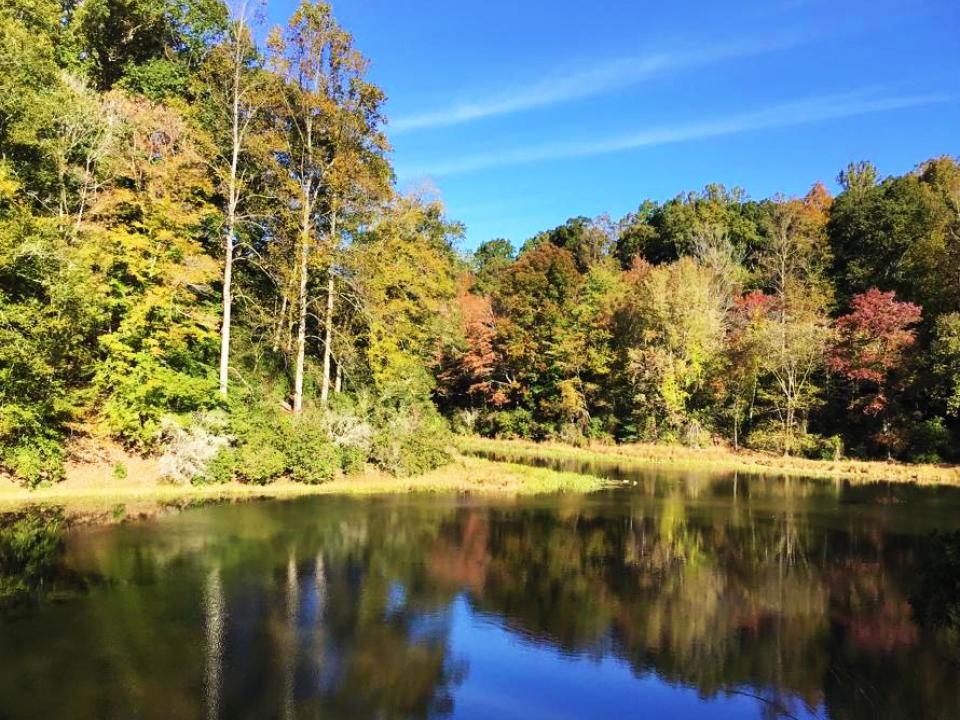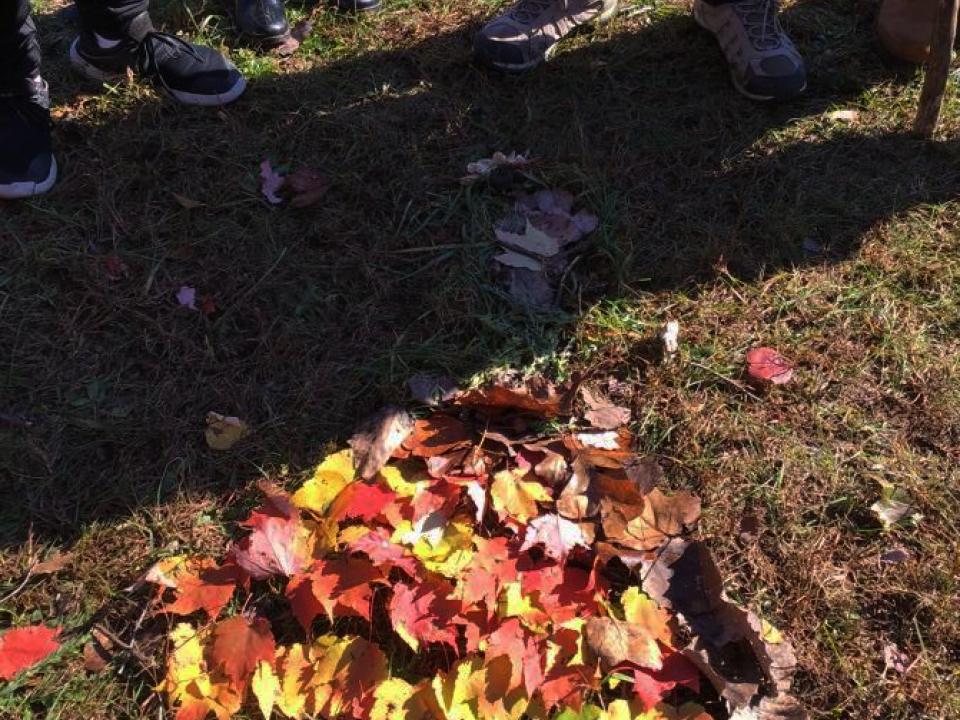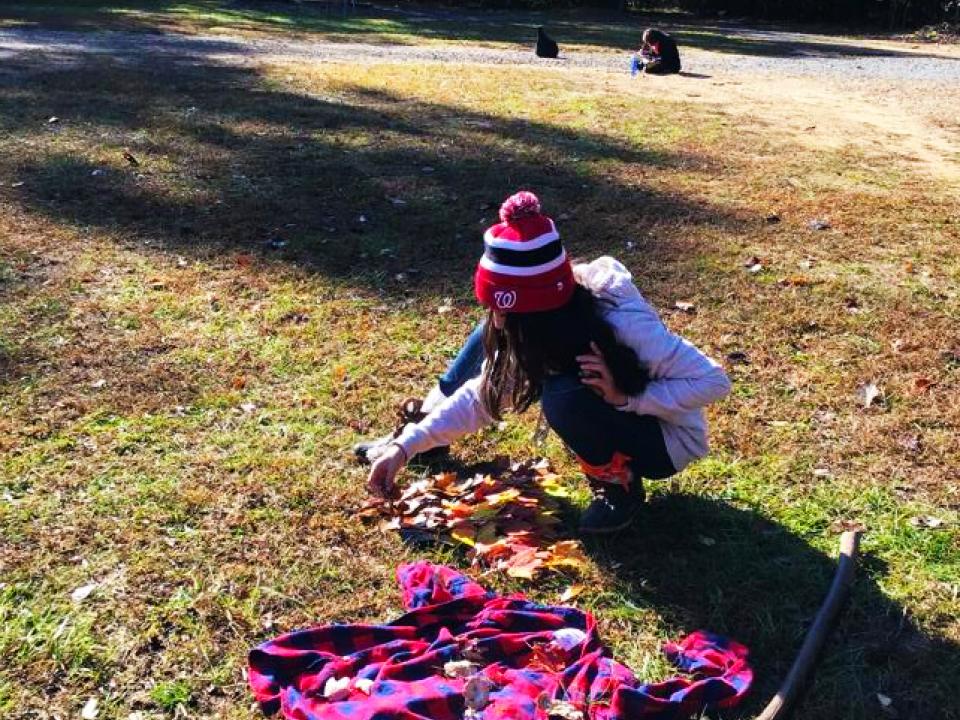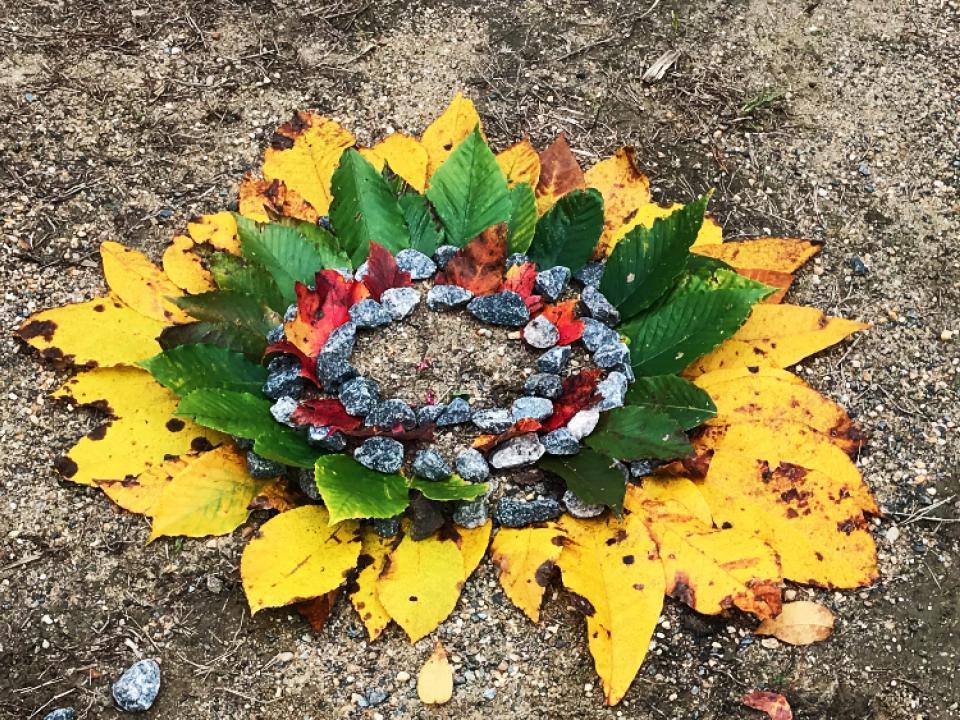Finding Art in Nature
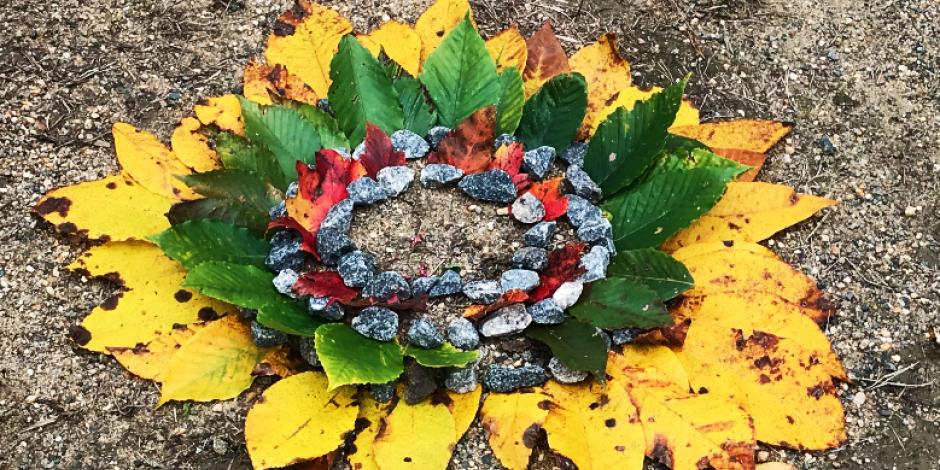
Last November, NatureBridge educator Kathryn Braddock captured in words the beauty of the change of seasons at our Prince William Forest Park campus. In the following blog post, she explores the connection between art and nature - through the eyes of her students:
Finding Art in Nature #
As fall comes into full swing here in Prince William Forest Park in Virginia, the leaves have begun to change color from deep greens to vibrant mixtures of oranges and reds. This change in scenery has encouraged students to focus their observations of the forest on the changing ecosystem. Due to this I have been increasing the amount of activities that involve investigating the trees’ changes. One way the students love to do this is through nature art. The students enjoy creating and working with their hands while also conjuring up discussions about the forest ecosystem life cycle. They have loved to use different colored leaves, broken branches and rocks to create unique designs inspired by the work of Andy Goldsworthy. We start each activity with a discussion of what art is, what art could be created from nature and how Andy Goldsworthy uses his art not to necessarily be “artistic,” but to exemplify the circle of life.
In a visiting school group of seventh graders from George M. Hampton Middle School in Woodbridge, VA, my students took their art to the next level, spending a good chunk of the afternoon perfecting their masterpieces and finding the perfect materials.
I had one student, Selma, who created a real special piece, both for herself and the entire group. Selma spent about 40 minutes arranging the components of her piece after finding her materials. Selma decided she wanted to work alone so that she could perfect her work of art. She started the process off discouraged because she could not get her "vision" right, and destroyed many of her trial runs before she created something she thought was satisfactory. While Selma was working alone, many of the other students were working in groups and collaborating in their efforts to make art from nature. We took an iPad out in the field with us to take pictures of the artwork, as well as to search for examples of Andy Goldsworthy’s work to draw inspiration from. Selma was just about to finish her piece when we began our “gallery walk,” an activity where the group took a tour around to every exhibit of art. We started with the piece of art furthest from Selma’s to give her a little more time for the finishing touches. We circled around everyone’s art and asked questions about what inspired the artists and why they chose the items from nature that they did. Many of the answers were as simple as “I liked the leaf color” and “the rocks were easy to find”.
My piece represents how we all change with time and we grow, but that is beautiful in each and every one of us and that is ok. - SelmaSelma
When we got to Selma she had such a touching sentiment for her piece. "My piece represents how we all change with time and we grow, but that is beautiful in each and every one of us and that is ok," she said.
When she said this, the chaperone and myself exchanged looks that could only be described with the “I’m not crying, you’re crying,” sentiment. Even the other students seemed to be touched by Selma’s words, displaying warm smiles and saying how Selma’s art was beautiful. Selma’s piece was the last one in the “gallery walk” and it was the last activity the students did before they left NatureBridge to go home. Selma’s words spoke to the whole group. Middle school is a time of great transition and change as many of us know, and Selma articulated so well in this moment how nature changes in ways that are beautiful and so can people. The changes in PRWI that fall had so dramatically brought were beautiful in their own way, just like everyone of us.
